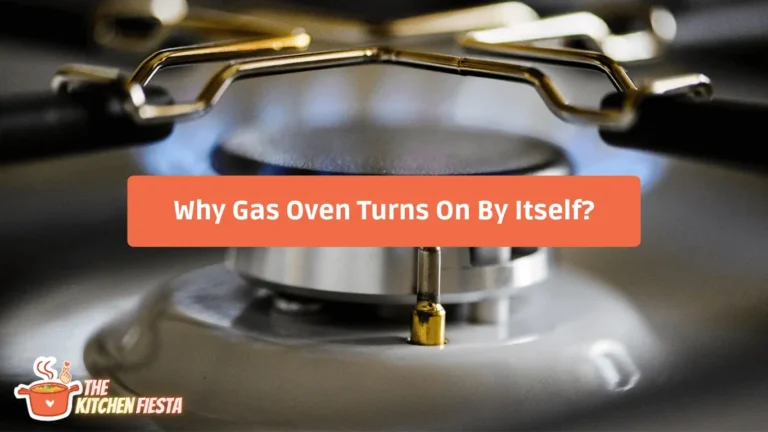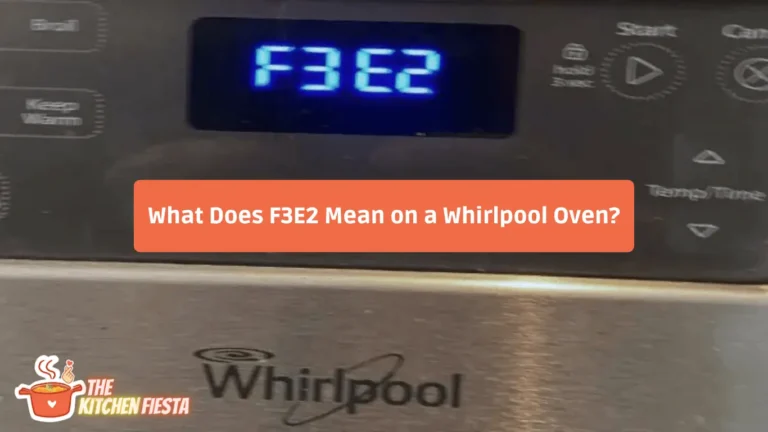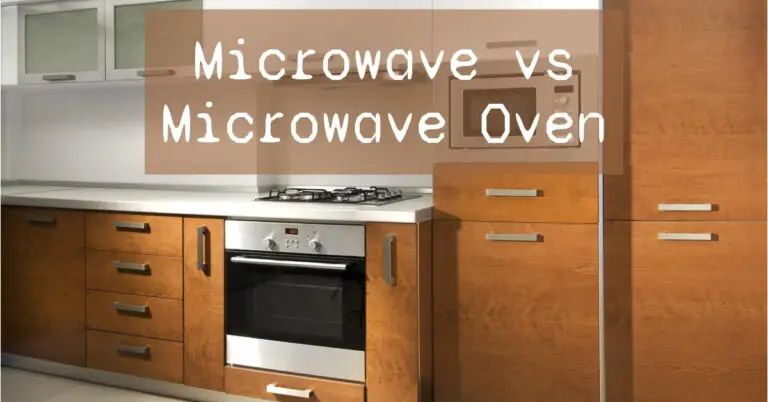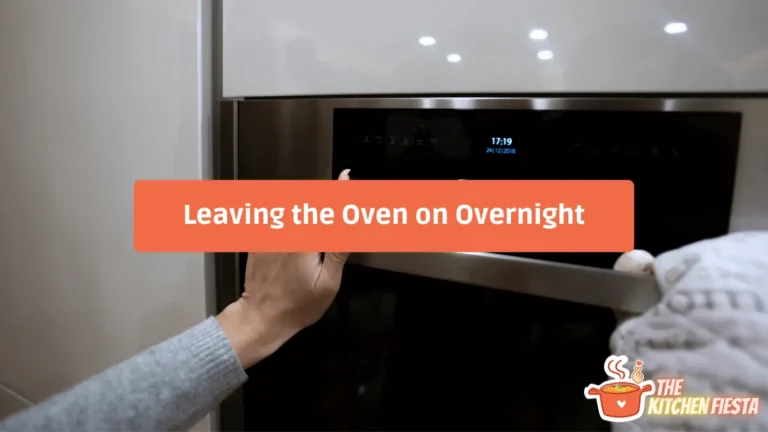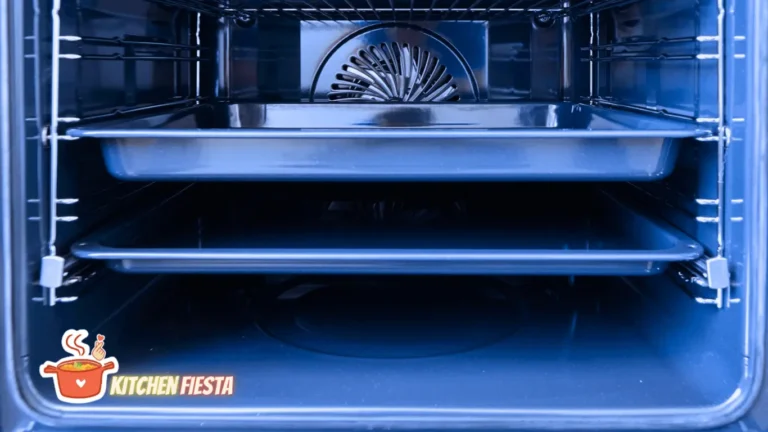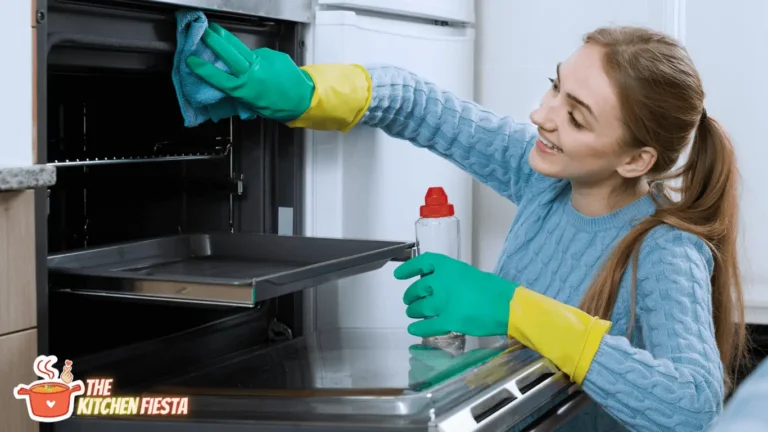How Hot Does a Microwave Oven Get? Maximum Temperature Explained
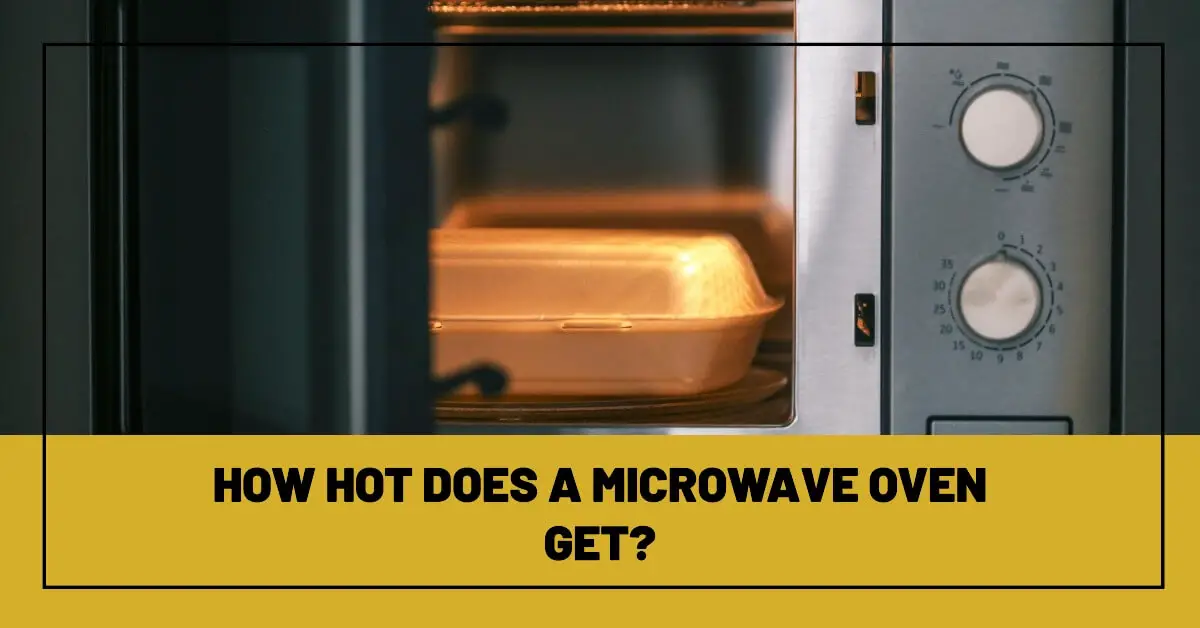
Cooking and reheating food quickly is one of the main appeals of microwave ovens. But how hot do they actually get? What’s the maximum temperature of microwave-cooked food and the oven itself?
Microwave ovens can reach temperatures over 200°F to cook food, with higher-wattage models heating to even higher temps. Food can reach temps up to 212°F when heated to boiling. The oven interior gets hot from the food, but not significantly above 200°F in normal use.
This article will explore how microwave ovens work, what temperatures they reach, safety considerations, and common myths about microwave heat. You’ll learn how wattage, cook time, food composition, size and other factors impact temperatures. Read on to get the full explanation of how hot microwaves really get!
Introduction: Why Be Concerned About Microwave Temperature?
Microwave ovens have been a staple of American households for decades, with over 90% of households owning a microwave oven. Their speed and convenience for reheating and cooking food is unmatched.
But if you’ve ever wondered just how hot the microwave gets or been concerned about microwaved food getting dangerously hot, you’re not alone. Understanding the temperature capabilities of your microwave oven can help you use it safely and effectively.
While microwave ovens don’t get nearly as hot as regular ovens using conventional heating methods, they can still reach high enough temperatures to cook food thoroughly and even boil water. And food itself can get hot enough to burn you!
So let’s explore some common questions about microwave oven temperature:
- What’s the highest temperature a typical microwave can reach?
- How does microwave heating work and how hot can it really get?
- What factors affect the temperature in a microwave?
- Can food catch fire or get dangerously hot in a microwave?
- What is the maximum temperature of different watt microwave ovens?
- What safety features prevent microwaves from overheating?
Read on for the answers!
What Temperature Can a Microwave Reach?
The highest temperature a microwave itself can reach depends on the wattage of the appliance. Most home models range from 600-1200 watts. More powerful microwaves can heat foods faster and reach higher temperatures.
Here are some typical maximum temperatures various microwave ovens can reach:
- 600-700W models: Around 180°F – 200°F
- 800-900W models: Approximately 200°F to 220°F
- 1000-1100W models: Up to 250°F
- Commercial microwaves over 1100W: Can surpass 275°F
However, these temperatures represent the maximums under sustained heating without food or objects absorbing the microwave energy. In normal use, microwaves rarely get hotter than 200°F inside.
The oven interior mainly gets hot from the heated food itself, not from the microwaves. Foods containing lots of water (soups, sauces) will make the inside air hotter as steam is released.
So while parts of your microwave oven like the door, walls and turntable may get warm during cooking, they don’t reach extremely high temperatures from the microwaves.
How Do Microwaves Heat Food So Quickly?
To understand how microwave ovens can rapidly heat foods above 200°F, you need to know how microwave cooking works.
Microwave ovens don’t rely on conventional methods like electrical heating coils or gas burners. Instead, they use microwave energy at a frequency that causes water molecules in food to vibrate rapidly.
This vibration creates friction and heat that cooks the food from the inside out. Foods high in water content heat fastest.
That’s why a microwave oven can bring a cup of water to a boil much faster than heating an empty ceramic mug! The water molecules efficiently absorb the microwave energy.
This internal heating can rapidly bring foods to temperatures above 200°F. For example, heating a bowl of oatmeal or soup for a few minutes can make it too hot to immediately eat.
So microwave cooking works differently than other cooking methods, but can heat some foods just as hot or even hotter.
What Factors Affect the Temperature in a Microwave?
Many variables affect how hot food can get when microwaved:
- Wattage – Higher wattage means faster heating and higher possible temps. A 1200W microwave will heat most foods hotter than a 600W model in the same time.
- Cooking time – The longer a food is microwaved, the hotter its internal temperature will become, up to the boiling point.
- Water content – Foods with more water will heat faster and reach a higher temperature. Drier foods like a baked potato heat slower than soups.
- Quantity – Smaller amounts heat faster than large batches.
- Composition – Fat, sugar and salt content affect heating speed.
- Size and shape – Smaller pieces and thinner shapes heat more quickly.
- Starting temperature – Foods at room temp will become hotter than refrigerated items.
- Arrangement – Clustered foods heat slower than spread out.
So you can control the final temperature by adjusting cook times, quantities and other factors. Lower watt microwaves will produce less heat at the same cook times.
Is Food Cooked to the Same Temperature as a Regular Oven?
Here is another point of confusion around microwave temperatures.
While microwaved foods can reach temps exceeding 200°F and even boiling point, the temperature throughout the food may be lower than an oven-cooked dish.
That’s because traditional ovens heat from the outside in. This brings the entire dish up to a hot internal temperature required to kill bacteria and thoroughly cook foods.
Microwave ovens, however, heat from the inside out. This can create hot spots where parts of the food are very hot or even boiling, while other areas are cooler.
That’s why it’s important to stir, rotate and allow microwaved foods to rest to evenly distribute heat. And follow recipe guides to ensure food is cooked to a safe internal temperature.
So a microwaved meal may have hotter and colder spots vs one cooked solely in a traditional oven.
What is the Highest Temperature a Typical Microwave Can Reach?
To summarize, here are the maximum temperatures typical home microwaves can reach:
- 600-700W models: Around 180°F – 200°F
- 800-900W models: Approximately 200°F to 220°F
- 1000-1100W models: Up to 250°F
- Commercial microwaves over 1100W: Above 275°F
However, these are maximums without any food absorbing the energy. Realistically, the interior air likely won’t surpass 200°F during normal cooking.
Foods themselves can briefly reach temps up to boiling point (212°F) in spots when heated to boiling. But the majority of the dish stays below 200°F.
Higher watt ovens can heat foods faster and reach higher potential temperatures. But the food composition and cook times have a big impact too.
How Does Microwave Heating Work and How Hot Can It Get?
To recap, microwave ovens use microwave energy at a specific frequency that excites water molecules in food, causing rapid vibration and friction that heats the food.
This microwave heating, also known as dielectric heating, cooks food from the inside out rather than external heating elements.
Microwaves are capable of bringing foods and water up to boiling point at 212°F and potentially higher temps in small spots. But the average temperature in a microwaved dish is often lower than an oven-cooked food.
The microwave oven itself does not get extremely hot, only warming to about 200°F at most during cooking. The enclosure is designed to contain the microwaves and insulation prevents heat transfer to the exterior.
So while microwave heating is intense enough to cook and boil foods, it works differently than conventional ovens. Understanding how microwaves interact with foods explains why they can heat items so quickly.
Can Food Catch Fire or Get Dangerously Hot in a Microwave?
It’s very rare for food to literally catch fire in a working, well-maintained microwave oven. Here are some general safety guidelines:
- Use microwave-safe cookware. Metal containers can cause arcing and sparks.
- Avoid microwaving foods with little water content for too long. Dry, burnable items can overheat and smolder.
- Don’t microwave empty containers or cook food way beyond the recommended time. This can damage the oven.
- Check food temperatures and allow microwaved items to rest before handling to prevent burns.
- Use potholders to remove hot containers like soup bowls and cups of tea.
- Keep the oven door and interior clean. Food debris can overheat and smoke.
So if you follow basic safety practices for your specific microwave wattage and use cook times suitable for the amounts and types of foods, fires or excess heat are unlikely.
But microwaved foods themselves – soups, oatmeal, pizza, mugs of water – can absolutely get hot enough to burn you! So handle heated items carefully.
What Happens if You Microwave Something Too Long?
We’ve all done it – set the microwave timer wrong and realized our food has been heating way too long. What actually happens?
If you microwave food far beyond the recommended time, here are some possible outcomes:
- The food continues to get hotter internally and externally. Thick foods like casseroles end up overcooked or dried out. Soups and thin foods can boil over or splatter.
- Portions of the food may overheat and actually start to cook again. This alters the texture and can create crunchy, tough spots.
- Excess steam from evaporating water makes the microwave interior hot and wet. This can damage the microwave over time.
- In extreme cases, very dry, flammable foods can actually burn or smoke as hot spots develop from overheating.
So it’s best to stick to reasonable cook times for the amount of food based on your appliance wattage. Pay attention as the time counts down and stop cooking if it looks done before the timer expires.
And never microwave an empty container or nothing at all. The lost moisture and lack of food to absorb energy can damage the oven in just a few seconds.
How Hot Do Microwaved Food and Drinks Get?
Here are some examples of typical temperatures common microwaved foods and beverages can reach:
- Soups, stews, oatmeal: 190°F – 212°F (bubbling, steaming)
- Casseroles, lasagna: 170°F – 200°F+
- Meats, poultry: 165°F (chicken cooked to safe temp)
- Vegetables: 175°F+ (steaming hot)
- Coffee, tea: 180°F – 190°F (scalding hot)
- Hot chocolate, cider: 160°F – 180°F
- Baby formula/milk: Body temperature, around 98°F
- Eggs: Don’t microwave raw eggs or they can explode!
- Leftovers: 165°F+ (steaming)
- Pizza: 190°F+ (piping hot)
These temperatures assume reasonably sized portions microwaved for suitable times in a typical 700-1000W oven.
Thinner foods and liquids can get hotter faster than dense casseroles. Stirring, rotating and standing time is needed for even heating.
What Is the Maximum Temperature of Different Microwave Ovens?
Let’s do a quick recap of the typical maximum capability of different microwave power levels:
- 600-700W models: Around 180°F – 200°F
- 800-900W models: Approximately 200°F to 220°F
- 1000-1100W models: Up to 250°F
- Commercial microwaves over 1100W: Above 275°F
Again, these are the highest temperatures the microwave enclosure itself could reach in a worst case scenario. Realistically, the temperature doesn’t exceed 200°F during normal use.
Higher wattage means faster heating times and higher potential temps. But lower watt ovens can still cook food thoroughly, it just takes longer.
Look for the wattage display on your microwave to understand its heating capabilities based on different foods and cook times.
What Safety Features Prevent Microwaves From Overheating?
Modern microwave ovens have multiple safety features to prevent overheating and damage:
- Automatic power level controls – Microwave energy pulses on and off to regulate heating.
- Interior temperature sensors – If it detects excessive heat, it shuts off magnetron.
- Door safety switches – Microwaves stop when door is opened.
- Mesh screens – Prevent microwaves escaping while allowing ventilation.
- Thermal cut-offs – Shut down magnetron if overheated.
- Well-sealed doors – Contains microwaves and heat in cooking chamber.
As long as you operate the appliance properly and don’t tamper with safety devices, these features will automatically prevent your microwave from overheating.
What Are Some Tips to Prevent Overheating Food?
While microwaves themselves won’t overheat with proper use, food can get hot enough to burn you or become dried out and overcooked. Here are some tips:
- Don’t microwave on maximum power by default. Start at 50% or 70% power.
- Go by time guidelines based on your wattage, and check sooner.
- Stir, rotate or flip food at halfway point.
- Allow microwaved foods to rest 1-2 minutes before consuming to evenly distribute heat.
- Use potholders to handle heated plates, mugs and containers.
- Make sure amounts fit in microwave without overflowing.
- Cover foods to retain moisture and avoid splatter.
- For kids, only reheat small amounts of food and milk to warm, not hot.
- Follow all food safety guidelines for proper cooking and reheating temperatures.
Brief History of the Microwave Oven and How Its Temperature Has Evolved
The first U.S. microwave ovens in the 1950s could barely heat food to room temperature. But rapid advances in magnetron and efficiency technology led to affordable, high-powered units by the 1970s.
By 1986, over 25% of American households owned a microwave. Today, over 90% of homes have one.
Modern microwave ovens operate at frequency levels that can heat food and water to scalding temperatures. Magnetron tubes have gotten smaller while increasing power output.
Better insulation, ventilation and temperature sensors also prevent excessive heat in the appliance itself. So microwaves have come a long way in reaching hotter temperatures more efficiently and safely!
Common Myths and Misconceptions About Microwave Oven Temperature
There are some common misconceptions about how hot microwave ovens get. Let’s debunk some myths:
Myth: Food cooks from microwave radiation, not the heat it generates.
Fact: Microwaves produce heat by exciting water molecules, which cooks the food. The electromagnetic waves themselves don’t heat or cook.
Myth: Microwaves cook food from the outside in.
Fact: They actually heat food from the inside out, unlike conventional ovens. This can create hot and cold spots.
Myth: Microwaves get hot enough to combust food or catch fire.
Fact: While fires are possible under extreme circumstances, it’s very rare in real-world conditions.
Myth: Microwaved food is never as hot as oven-cooked meals.
Fact: Thin liquids and foods can actually reach boiling point faster than some oven cooking. But dense foods may not heat evenly.
Myth: Microwaves significantly heat up the surrounding walls and exterior.
Fact: The cooking chamber gets hot from steam and food, but insulation prevents exterior heating.
Conclusion: Key Takeaways on Microwave Oven Temperature
- Typical home microwave ovens won’t exceed 200°F internally during normal operation.
- Foods can briefly reach up to boiling temperature of 212°F in spots.
- Higher wattage means faster heating times and higher potential temps.
- Many factors like cook time, quantity, and composition affect how hot food gets.
- Liquids and thin foods heat quickest; dense foods heat unevenly.
- Microwaves heat via water molecules, not external heating elements.
- Always handle heated food and dishes carefully to prevent burns.
- Follow microwave safety guidelines to prevent damage and fires.
Understanding how microwave heating works and what temperatures your appliance can reach helps you use it for safe, efficient cooking and reheating. While microwave ovens themselves don’t get extremely hot compared to other cooking methods, the food inside certainly can!

